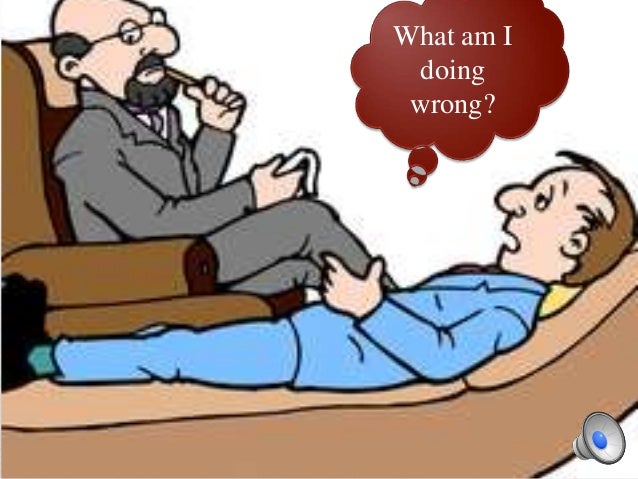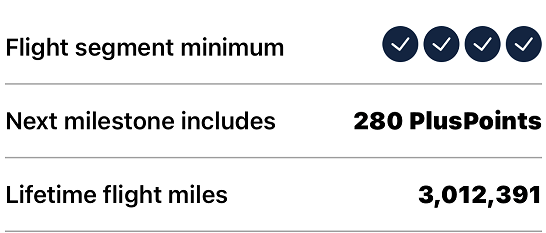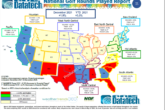
At the beginning of this year, I had the pleasure of conversing with two leading golf course real estate investment advisers (Steve Ekovich, Leisure Investment Properties) and Jeff Woolson (CBRE) and one of the top strategists and marketing wizards in the golf industry Rich Katz.
Steve and Jeff confirmed that the real estate market to buy golf courses is “hot” with unprecedented cap rates. It is a great time to sell your golf course if one is realistic about the uncertain future of the golf industry, especially if the facility has a lot of deferred capital expenditures and outstanding debt greater than $1 million. Few will. Many should.
Rich, in a wide-ranging discussion regarding the ongoing financial strength of golf courses, asked a simple question, “When will your next book be published?”
My answer was straightforward, “In the books we published, the formula for maximizing the financial potential of a golf course is well-documented. The seven steps outlined, and the accompanying 15 Excel templates provide golf course a clear path to create a successful strategic plan.” There is nothing more that needs to be said.
Rich countered, “What I would enjoy reading about is the philosophy and the psychological biases of golf course owners and their management team that undermine the facility’s ability to reach its potential?
It is a highly complex subject with a simple answer.
Are you a student of human nature? Can you help me answer the following questions?
- Why do people select the same church pew for the same service every week?
- Why is it, two years after the Pandemic started, the same people show up at the gym at the same time to utilize the same equipment with the same beer belly?
- Why do people wait in their car for up to 15 minutes to pay $4.00 for the same drink every morning at Starbucks for what costs $0.20 if made at home with a French press?
- Why do people keep their season tickets for decades regardless of how their football, basketball, baseball, or hockey team plays?
- Why is it so difficult to lose weight, stop smoking, or quit drinking excessive amounts of alcohol?
The answers to those questions may explain why golf courses financially underperform. Maslow’s Hierarchy of Needs, I believe, provides a clue. Maslow postulated a human’s needs as follows:
 Golf courses operate on such a thin thread as most are risk-averse. The golf course owner and, in turn, their managers’ orientation is likely grounded in the principle of safety: remaining in business, being employed, and conserving resources. There is a solid case to be made the pursuit of security compromises the financial potential of a golf course.
Golf courses operate on such a thin thread as most are risk-averse. The golf course owner and, in turn, their managers’ orientation is likely grounded in the principle of safety: remaining in business, being employed, and conserving resources. There is a solid case to be made the pursuit of security compromises the financial potential of a golf course.
That thought is illustrated by some fundamental truths about the financial potential of a golf course, that while noticeable, are not grasped by many.
Operating a golf course is not a single business – it represents the amalgamation of an entertainment complex that offers a restaurant, a special events banquet setting, a recreational athletic venue, a clothing and equipment department store, all of which is framed around the responsibility to manage a > 150-acre farm that is subject to the perils of weather.
With the typical public and private facility generating only annually $1.4 million and $4.5 million respectively, the diversity of labor expertise required and the multi-faceted accounting systems necessary to produce actionable financial data precludes the introduction of economies of scale. The ownership of a golf course is truly a small business.
Every golf course has a limited financial potential based on its location.
Within the top 100 Core Based Statistical Areas in the US (i.e., large cities), there are 2,216 golfers per 18 holes. Within the entire country, there are 1,711 golfers per 18 holes. According to Richard Singer of the National Golf Foundation [1], a golf course should have 4,000 golfers per 18 holes within a 10-mile radius to be successful. Only 859 golf courses (5.6%) in the US meet that criterion.
Nearly 33% of the golf courses in the US (5,179 facilities) have less than 1,000 golfers per 18 holes within a 10-mile radius. They have little chance.
For those golf courses that have more than 10,000 golfers per 18 holes (21 golf courses in the US – think New York, Chicago, Los Angeles), their financial potential is limited by the capacity of their courses and the discretionary spending constraints of their customers.
I had a dear friend buy a course in the middle of nowhere. Another leading industry operational guru and I advised stating before their purchase that the facility had limited revenue potential – less than $900,000. They believed that their superlative programming efforts would increase revenue to fund the $600,000 in debt required to acquire the course. Before the purchase, they were earning annually six figures working for a management company. Now the cash flow from their course, before their salary, is less than mid-five figures. Recently they admitted that the course has limited revenue potential, and that programming can only impact the total revenue by less than 15%.
Every golf course has a limited financial potential based on the experience it creates in contrast to the neighborhood it is located within. Each golf course appeals to a limited set of golfers relative to their ability. Would a beginner golfer enjoy and frequently play Bethpage Black or TPC Sawgrass? Would an accomplished player seek to play a 113-slope rate course often? In both cases, the answer is no.
There is a direct correlation between the attitudinal behavior, as measured by the Experian MOSIAC profile index, and the golf courses they desire to play. The lower the MOSAIC profile index, the easier the golf course they seek, i.e., a negative 30% benchmark would suggest a nearby golf course should have a slope rating of less than 118. If the benchmark is 40%, a golf course in the neighborhood with a slope rating greater than 135 would be appropriate.
Golf course managers are overwhelmed with the daily operational responsibilities of managing a facility; they rarely engage in strategic planning.
While every golf course should develop a five-year business plan defining its mission and vision, allocating the appropriate tactical resources, and stating the applicable policy and procedures – few do.
Even third-party management companies, when retained, usually only prepare an “operating budget.” The lack of progressive thinking renders the status quo the default operating philosophy of most golf courses.
We had a conversation with a daily-fee owner in Michigan several years ago. The person commented that they were consumed by operational tasks, including ordering the food from the wholesale distributor and sometimes flipping burgers; they never had the time to manage the business proactively. They had an MBA from the University. They didn’t have a strategic plan.
The orientation of golf course owners and managers to conserve resources encourages them, to their disadvantage, to engage in barter without first calculating the potential financial cost. The highest cost of any good can be those that are free.
Golf courses have engaged in many forms of barter for many years, giving away free rounds for services, i.e., media advertising, accounting, legal and tax services, etc. With utilization, pre-Pandemic at 52% of capacity, it seemed innocent.
Perhaps the most well-known use of swap is in providing “trade tee times” in exchange for golf management software.
One vendor with a client base of over 9,000 courses, at the NGCOA Multi-Cor conference, stated that 68% of facilities utilize “barter” over the cash option they provide. In a report we saw three years ago, the average Colorado golf course had its tee times sold valued at $28,000 as compensation for the “FREE” software. The fair market value of an annual golf software license is $10,000. More importantly, a golf course’s customer was being trained to view the availability of tee times at many courses rather than being propelled to solely view their course.
Golf course owners select the barter option as a lazy default rationalizing they have no choice. Their excuse is that their competitors use that software that provides marketing services and brand recognition via a third-party platform which provides extensive national advertising. If they don’t join the third-party platform, they are at a competitive disadvantage. Hardly.
Golf Course owners and managers are fearful of alienating their client base and allow the customer to influence the green fees charged.
More than 70% of golf courses offer season passes for unlimited play. The reasons given are that it provides needed cash flow during the off-season, ensures continued customer loyalty, and generates weekday play when demand isn’t as heavy.
Season passes on their face, if priced correctly, are not that detrimental to the financial potential of a golf course, but the qualitative impact of the experience provided by the golf course can be highly damaging.
Season pass holders perceive themselves as members. Some become very territorial over when they want to play, where they park, the special perks they perceive they are entitled to as frequent customers, and the lack of civility and courteousness they sometimes exhibit to other golfers.
This irrational behavior was seen last year in North Carolina. A management company acquired several golf courses and had a meeting with the facility’s “members.” These memberships were basically season pass holders, and the new management informed the golfers that the “memberships” were being discontinued. The members became outraged, belligerent, and threatening to the new owners in what became one of the most contentious meetings these exceptionally talented golf course managers had experienced.
Undaunted, the managers thanked the golfers for their historical patronage, expressed they hoped they would return, and discontinued selling the passes effective December 1, 2021.
The result – rounds are up, revenue is soaring, and the malcontents are gone.
What is the Lesson for Golf Course Owners?
Our mission has been to enhance the golfer experience on a foundation that optimizes the financial performance of a golf course. To gain a unique perspective that I could share, I have traveled to 58 countries visiting over 6,000 golf courses and have flown over 3 million miles on United Airlines, as reflected below:

I have been a loyal United Airlines customer for 30 years. I have stayed for over six years of my life in Marriott Hotels.
Today, I am in the fourth quarter of my life as this is my 27,135-day living. It remains a passion to guide golf course owners to financial prosperity.
Wistfully, I have come to realize that may not happen as I genuinely hoped. Not because of the challenging work expended, the great insights provided, or the sincere desire to see our client’s golf course thrive financially but for a simple barrier – the inability of a human being to embrace and implement change. The status quo is a formidable foe.
What are your thoughts on the psychological barriers facing golf course managers that limit the investment return of their golf course?

